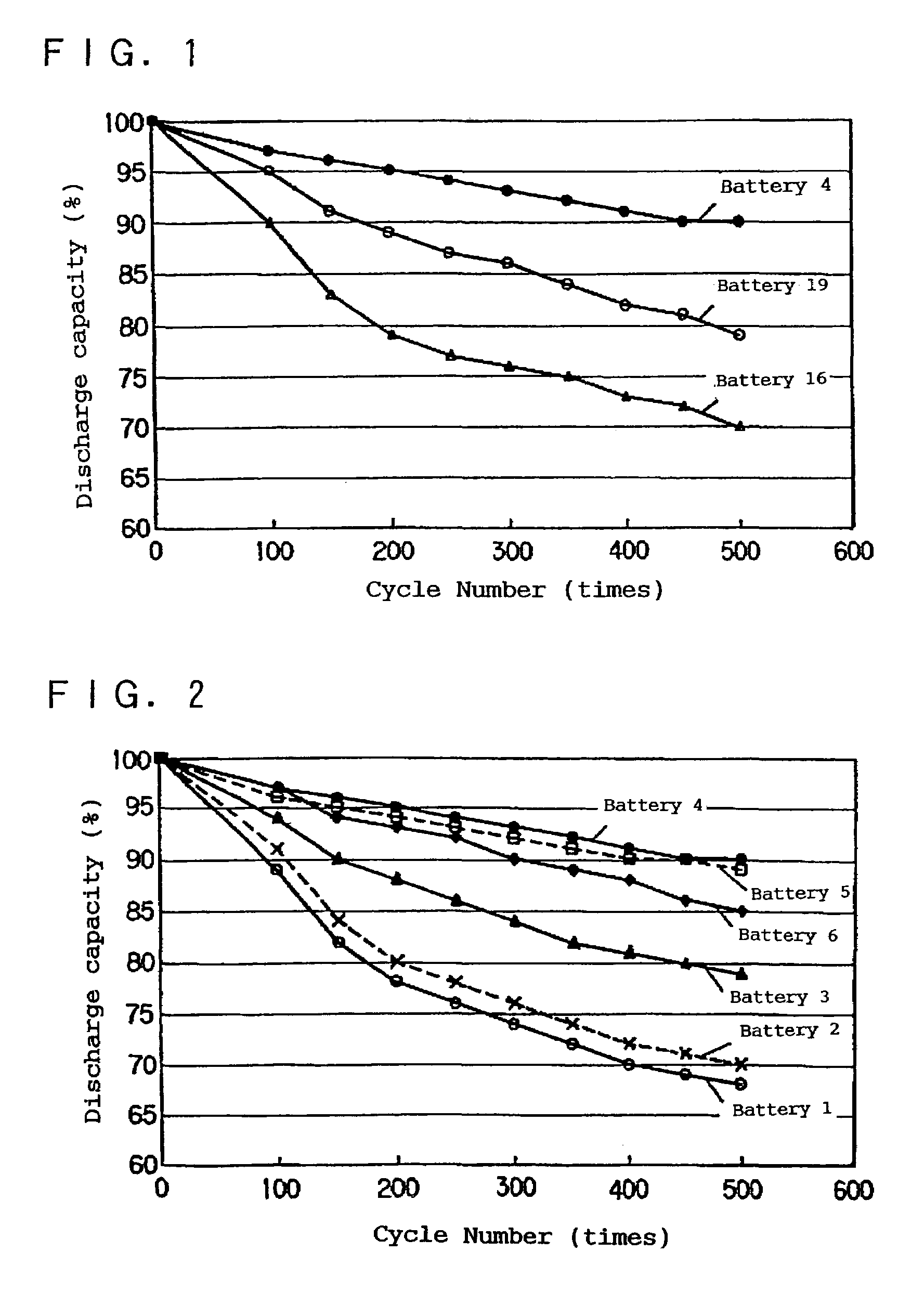Method for fabricating lithium ion secondary battery
a secondary battery and winding technology, applied in the direction of cell components, final product manufacturing, sustainable manufacturing/processing, etc., can solve the problems of deterioration of characteristics, gas remaining in the electrode plate assembly, and deformation of the electrode plate assembly
- Summary
- Abstract
- Description
- Claims
- Application Information
AI Technical Summary
Benefits of technology
Problems solved by technology
Method used
Image
Examples
example
[0045]In the present example, batteries comprising an electrode plate A as a positive electrode and an electrode plate B, on which a porous polymer layer would be formed, as a negative electrode was fabricated.
(1) Battery Group A
[0046]A positive electrode was prepared as follows: 100 parts by weight of LiCoO2 as an active material was added with 3 parts by weight of carbon black to obtain a mixture. This mixture was then added with an NMP solution with 12 wt % of PVdF dissolved therein such that 6 parts by weight of a resin component as a binder material was contained, followed by mixing, to prepare a positive electrode material mixture. The obtained positive electrode material mixture was applied onto each face of aluminum foil with a thickness of 20 μm by a known method, which was then dried, pressurized and cut out to obtain a positive electrode plate with a thickness of 150 μm containing PVdF as the resin component of the binder.
[0047]A negative electrode was prepared as follows...
PUM
| Property | Measurement | Unit |
|---|---|---|
| temperature | aaaaa | aaaaa |
| temperature | aaaaa | aaaaa |
| open-circuit voltage | aaaaa | aaaaa |
Abstract
Description
Claims
Application Information
 Login to View More
Login to View More - R&D
- Intellectual Property
- Life Sciences
- Materials
- Tech Scout
- Unparalleled Data Quality
- Higher Quality Content
- 60% Fewer Hallucinations
Browse by: Latest US Patents, China's latest patents, Technical Efficacy Thesaurus, Application Domain, Technology Topic, Popular Technical Reports.
© 2025 PatSnap. All rights reserved.Legal|Privacy policy|Modern Slavery Act Transparency Statement|Sitemap|About US| Contact US: help@patsnap.com

